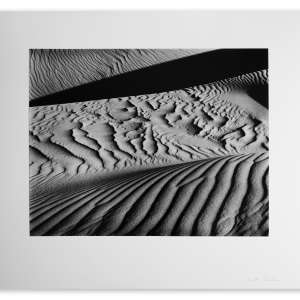Brett Weston
Brett Weston Biography Brett Weston (199-1993) was one of the most influential photographers of the twentieth century, most renowned for his strong creations based on Western landscapes, natural forms, and his exceptional printing style. Weston was part of Group f/64, a small yet well-known group of photographers in California who favored large-format view cameras, straight and uncropped photos, as well as stark black and white prints in the 1930s. At the age of 13, in 1925, Weston was removed from school to become his father's photography apprentice in Mexico City. Having been surrounded by revolutionary artists of the day, Weston then drew inspiration from painters like Jean Charlot, José Clemente Orozco, José David Alfaro Siqueiros, and Diego Rivera. This inspiration eventually led him to begin taking photographs with his father's small Graflex 3 1/4 4 1/4-inch camera. His early exposure to contemporary art influenced Weston's sense of form and composition. His early photos of natural and artificial themes show a strong understanding of design. Weston enjoyed how the camera changed close-up subjects and how photography's black-and-white tones obscured an object's look even more. The trend towards abstraction inspired much of his work throughout his 70-year career. Despite acknowledging his father's creative impact on his work and expressing admiration for other photographers such as Paul Strand, Charles Sheeler, and Henri Cartier-Bresson, Weston believed non-photographic artists had a more significant influence on his work. He noted Georgia O'Keeffe as the best American painter and expressed admiration for Die Blaue Vier (The Blue Four), a group of Russian and German Expressionists known for their strong color and emotion in their art. In 1938, Weston began producing a series of portfolios combining groupings of his images for sale and distribution. Throughout his career, he would go on to design a total of 14 portfolios, each ranging upwards of 20 prints per portfolio. Brett Weston's style evolved between 1950 and 1980. During this artistic shift, his work became more distinguished by bold, abstract imagery. The topics he chose were like the biological studies that piqued his attention early in his career: plant leaves, knotted roots, and tangled kelp. He focused on close-ups and abstracted details, yet his prints indicated a propensity for a stark contrast, reducing his subjects to pure graphic form. In the late 1970s and early 1980s, Weston spent many years on Hawaii's Big Island and eventually died in Kona, Hawaii, in 1993. Some of Weston's notable works include Underwater Nude , 1979; Underwater Nude , 1981; Harbor, The Netherlands , 1960; Texas Desert , 1946; Dune Oceano , 1984; and Signs , 1977. Brett Weston’s work can be found in permanent collections such as at the Carnegie Museum of Art, Pittsburgh, Pennsylvania; Los Angeles County Museum of Art; Oklahoma City Museum of Art; Colorado Springs Fine Arts Center; Museum of Modern Art, New York; Honolulu Museum of Art; and Tate, UK.













